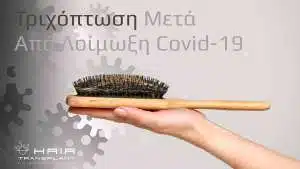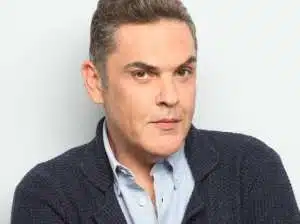
Title Hair loss after Covid-19 infection
Following research published by (Lambert et al, 2020) and the American Academy of Dermatology (AAD), patients are experiencing hair thinning or significant hair loss as a result of infection with

Eyebrow Transplantation & Eyebrow Transplantation Restoration
The eyebrows are one of the most critical elements of the face which help determine how we look, externally.
In many respects, the eyebrows are more important to a person’s appearance than the scalp hair, because they have a more central position on the face and serve in order to frame the eyes (perhaps the most important element of the face). Unlike scalp hair loss, the loss of eyebrows is not considered as a natural process and is therefore not cosmetically acceptable.
The eyebrows may be lost for various reasons, including the thyroid diseases and other systemic diseases, such as alopecia areata, burns, tattoos, infections, repeated depilation, congenital weakness in their growth, and a genetic tendency of the eyebrows to thin, or even disappear, over time.
Eyebrow restorations are similar to the hair transplantation procedures performed on the scalp, meaning that, in the case of suitable candidates, transplanted hair is permanent.
However, since the eyebrows have their own unique properties, eyebrow transplantations differ from hair transplantations at various important points.
The direction of the hair in the eyebrows changes dramatically in the different parts of the forehead.
In the area of the eyebrows closer to the nose, the hairs face upwards.
The hairs all over the top of the brow face outwards and downwards.
The hairs at the bottom of the forehead grow outward and upwards.
This pattern causes the hair to grow in the middle of the eyebrows in a way that converges and forms a thin, natural height which emerges horizontally, through the midline of each eyebrow.
The second characteristic of the eyebrow hair is that the hairs project from the follicle at a very sharp angle, so that the hair grows in the same plane, parallel to the skin surface.
This contrasts with the hair of the scalp, where the angle between them and the scalp may be of even 45 degrees.
The third important characteristic of the eyebrows is that the hair grows as individual units rather than the classic 1 – 4 hairs / hair follicle unit that is one of the most common hair scalp characteristics.
The fourth distinctive feature of eyebrow hair is that the hair growth cycle is very short.
This means that the eyebrows will grow (anagen / regeneration) only for about 4 months before the telogen phase begins and they will fall.
As opposed to the above, the scalp hair has a growth phase that can last from 3 to 7 years, a fact which results in the scalp hair being able to grow much more.
The most important aspect of eyebrow transplantation is to very closely follow the direction of the natural hair.
The hair receiving areas should be prepared with a very fine (diameter wise) needle guide which will literally apply, along the surface of the skin, as the implantation points shall be determined, a practice which shall ensure that the hair is located, as long as the possibly, at the same level as the skin surface, as new hairs grow.
Another important part of eyebrow restoration is that only individual hair follicles can be used. Since, of course, the scalp consists of 1 to 4 hairs per hair follicle, hairs obtained from this area must be subdivided into 1-hair grafts, using a microscope.
From a technical point of view, eyebrow transplantation is not actually a transplantation of hair follicular units, but it is rather a highly sophisticated form of micro-transplantation.
Moreover, when the patient’s hair is wavy or curly, it is especially important to rotate the direction of this hair, so that the curve of the hair to be implanted follows the natural curve of the eyebrows.
Although eyebrow transplantation is a safe and aesthetically elegant process, there are a few things to look for before one subjected to this kind of hair restoration.
As with hair transplantations on the scalp, transplanted eyebrows shall continue to grow and should therefore be cut periodically.
Apart from the fact that this may be a minor nuisance in general, cutting off the particular hair leaves a final appearance, after the cutting, which is not as delicate as it happens with the smooth edges on the end of the intact hair of the normal brow. During the healing process, all incisions tend to converge.
When this occurs in the graft receiving regions, there is a possibility that their flat orientation may slightly change, and sometimes this results for the eyebrows in those areas being slightly more upright than someone would like.
Unlike hair transplantations, where the transplanted hair is taken from another part of the scalp and fit perfectly, when it comes to eyebrow transplantations, the grafts are taken from a part of the body other than the eyebrows and they will therefore have slightly different characteristics, both in terms of growth and appearance.
If different, then, over time, these transplanted hairs shall slowly begin to approach the developmental pathway and the characteristics of the existing eyebrow hair.
The appearance of eyebrow transplantations shall mature and be perfected over a year or so.
Fill out the form below and we will contact you to book a completely free diagnostic appointment for examination. The diagnosis is made by Dr. Ioannis Papangelopoulos (MD, PhD).

Following research published by (Lambert et al, 2020) and the American Academy of Dermatology (AAD), patients are experiencing hair thinning or significant hair loss as a result of infection with

Vegetarianism (in its various forms) is gaining more and more fertile ground these days, as even in our country its advantages are being promoted over the previous prevailing opinion that

We would like to thank mr Antonis Loudaros, who trusted the Hair Transplant Clinic and underwent a hair transplant with complete success. The renowned team of doctors, led by Ioannis